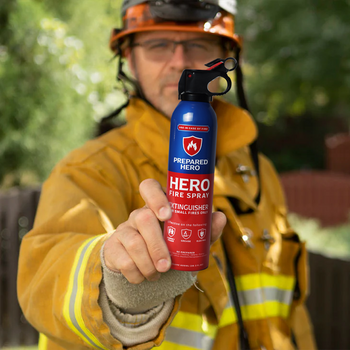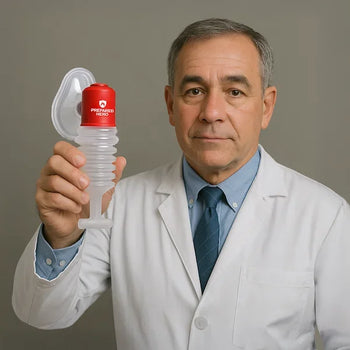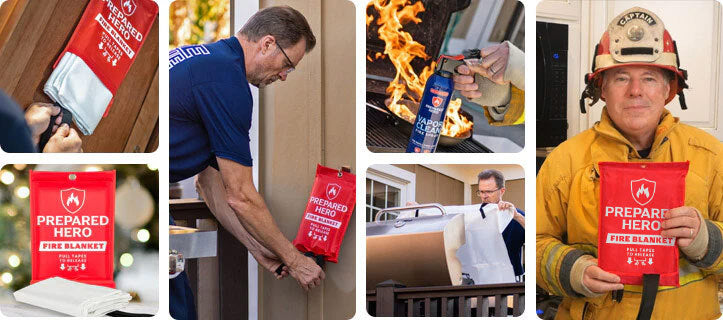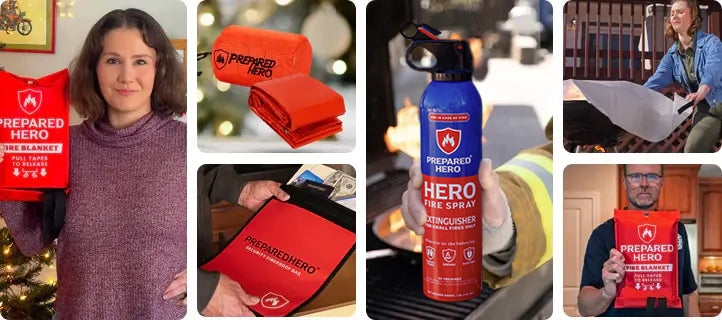Where you put your smoke detectors matters just as much as installing them. Proper placement makes sure they can detect...
Motor oil keeps your vehicle’s engine running smoothly. However, there are some things you should know about it.
Is motor oil flammable? Can it catch fire under certain conditions? In this article, we’ll talk about the basics of motor oil, its flashpoint, and how to properly store it to avoid fire.
What Is Motor Oil?

Motor oil keeps your vehicle’s engine running smoothly. It’s made from crude oil or natural gas that’s been processed and refined. It’s also known as engine oil or engine lubricant.
Motor oil’s main job is to decrease friction between all the moving parts in your engine so they don’t grind against each other and wear out too fast.
Aside from lubrication, motor oil also helps cool the engine by carrying heat away from those hot metal parts. As it circulates, it picks up dirt and tiny bits of metal. It then brings all the gunk to the oil filter. This keeps the engine cleaner over time.
Modern motor oils are more advanced than just oil. They’re a blend of base oils and special additives. The additives do a lot, such as preventing rust, stopping foam from forming, keeping the oil flowing in cold weather, and helping the engine stay clean.
Some oils are synthetic, which means they’re engineered to last longer and work better in extreme temperatures. No matter the type, motor oil protects your engine, helps it last longer, and improves fuel efficiency.
Is Motor Oil Flammable or Combustible?
Motor oil is not flammable. The NFPA (National Fire Protection Association) says that a flammable liquid has a flashpoint below 100°F (37.8°C). Motor oil needs more heat, usually between 250°F (121°C) and 450°F (232°C), for its vapors to ignite. So while it won’t burst into flames on a hot day, it can still burn if exposed to enough heat.
While motor oil is not flammable, it is combustible. The NFPA states that a combustible liquid has a flashpoint at or above 100°F (37.8 °C). Since motor oil has a flash point above 100°F, it can combust. This also means motor or engine oil needs more heat to ignite compared to liquids with lower flashpoints.
In particular, the NFPA classifies motor oil as a Class IIIB liquid, which means it has a high risk for ignition. Liquids like gasoline, which have a flashpoint below 73°F (23°C), are classified as Class IA and are much more volatile.
Despite having a high flash point, you still have to treat diesel with caution. Spills, leaks, or contact with heat sources can cause it to catch fire. This is why proper storage and safety measures are crucial when using or transporting motor oil.
Flash Point of Motor Oil

Flash point refers to the lowest temperature at which a liquid releases enough vapor to form a flammable mixture with air. When a liquid reaches its flash point, applying heat can cause the vapors above the liquid to ignite. However, the flame won't keep burning unless the temperature is higher than the flash point, which would allow the vapor to keep fueling the fire.
A substance’s flash point is often tested by slowly heating it in a closed container while introducing a small flame at regular temperature intervals. This test also helps determine how to properly handle liquids, especially for fuels like diesel and gasoline.
A low flash point means a liquid ignites more easily. Take note that it's different from the fire point, the temperature at which a liquid burns after the flame is removed. Flash points and fire points help with fire safety, as liquids with lower flash points are more volatile in certain environments.
Will Motor Oil Burn in a Fire?
Yes, motor oil will burn in a fire. Even though it’s not technically flammable, it is combustible. This means it won’t catch fire as easily as gasoline, but it can catch fire with enough heat.
For instance, motor oil spills onto your engine. There’s a risk it could catch fire, especially if the engine is already running hot. Normal engine temperatures range from about 195°F (90.5°C) to 225°F (107.2°C), so a leak might not cause a fire right away. But if you’re low on oil, the engine can overheat, which raises the risk of ignition.
Burning oil isn't the only concern. Leaks can also wear out rubber seals and hoses, making your car more likely to break down or fail while you’re driving. If you see oil spots or smell burning oil, get it checked right away.
You should also clean up spills properly. Use an absorbent that’s effective. Doing this helps keep you and other drivers safer.
Can Spilled Engine Oil Catch Fire?

Yes, spilled engine oil can catch fire, especially if it hits a hot surface. Spilled engine oil is not that easy to ignite, but it can catch fire under the right conditions. Motor oil is a hydrocarbon, so it can burn once it gets hot enough.
The main thing to watch out for is oil landing on extremely hot parts of the engine, like the exhaust manifold. That area gets exceedingly hot. If oil pools there, it could reach its ignition point and start burning.
Sometimes, a small amount of spilled engine oil might just sizzle and smoke. However, a big spill could start a real fire. That’s why it’s important to clean up any oil leaks or spills as soon as you spot them.
Plus, don’t let oil sit on engine parts, especially after topping it off or changing it. Quick cleanups can prevent fires and help keep you safe.
Can a Spark Ignite Motor Oil?
No, a spark can’t usually ignite motor oil. That’s because motor oil has a high flash point between 250°F (121°C) and 450°F (232°C). This means motor oil needs to be extremely hot before it produces vapors that a spark could ignite.
For instance, spilling motor oil in a cool area with a spark landing on it won’t ignite the oil. Unlike gasoline, which can go up in flames from just a tiny spark, motor oil needs way more heat to even become a major fire hazard.
However, if motor oil is sitting on a hot engine part (like the exhaust manifold) and it’s near its flash point, then a spark could set it off. Plus, it's the vapor from the motor oil that burns, not the oil itself. So, the oil isn’t going to light up without enough heat to vaporize it.
While a spark usually won’t be enough to cause trouble, it’s still smart to keep motor oil away from open flames, sparks, or hot surfaces. You should also clean up spills quickly, especially in attached garages or workshops.
How to Store Motor Oil Properly

1. Keep It Cool and Dry
Motor oil lasts longer when stored in a cool, dry place. Think of a detached garage or shed that doesn’t get too hot or damp. You should also avoid areas where the temperature swings a lot.
2. Watch the Sun and Airflow
Sunlight breaks down motor oil over time, so don’t leave it near a window or outside. A shaded spot works best. Good airflow is also important, so don’t store your engine oil in a cramped cabinet where moisture can build up. Remember, ventilation goes a long way in preventing condensation.
3. Use the Right Container
Always keep your engine oil in a sealed container. The original container is the best option because it’s designed to protect the oil. You should also avoid leaving it open or transferring it to a random bottle. Air and moisture getting in will only mess with the oil's quality. If you need to pour oil into another container, use one that’s clean, dry, and made for motor oil.
4. Don’t Mix It Up
Never mix motor oil with other fluids like gas or brake fluid. Doing that makes it useless and harder to dispose of safely. Stick to using dedicated containers for motor oil.
5. Label and Rotate
Label your oil containers with the date you bought or opened them. Use the older oil first to make sure nothing sits around too long.
6. Keep It Off the Floor
Place your motor oil on blocks if you're storing large containers or drums outside. Doing this keeps water and moisture from sneaking in from the ground.
7. Have Fire Safety Measures in Place
Motor oil doesn't ignite as easily as gasoline, but it’s still a fire risk and hazard. Keep fire prevention tools like fire blankets, fire sprays, and fire extinguishers nearby.
Is It Legal to Burn Used Motor Oil?

Burning used motor oil isn’t always legal, and even when it is, there are strict rules people should follow. In the US, the EPA (Environmental Protection Agency) allows burning used oil if burners meet a certain set of quality standards and as long as the used oil is burned in appropriate furnaces, boilers, or incinerators.
However, you can’t just light up motor oil in your backyard or throw it into a fire pit. It’s illegal and bad for the environment.
Bottom line: don’t assume it’s okay to burn used oil. When in doubt, ask a local collection center or auto shop to recycle it properly. It’s safer and legal.
How Do You Put Out a Motor Oil Fire?

Motor oil fires can be dangerous, especially in the engine bay. If you ever face one, acting quickly and safely can make a big difference. Here’s how to put out a motor oil fire:
1. Pop the Hood
Pull the hood release inside the car to unlock it. Don’t open the hood yet. Just pop it so you can check the situation.
2. Check the Temperature
Touch the top of the hood carefully. If it’s too hot to touch, do not open it. Heat means the fire underneath is intense.
3. Spray Through the Gaps
If the hood is hot, grab a fire extinguisher or spray and aim it through the front grill or any open gaps. Spray directly into the engine bay without fully opening the hood.
4. Open Slightly If Safe
If the hood isn’t too hot, unlatch it and open just a bit. Get the fire extinguisher nozzle in and spray the base of the flames.
5. Don’t Take Risks
Never throw the hood wide open because it feeds oxygen to the fire. If it’s already out of control, back away and call the fire department right away. Always put your safety first.
Is Motor Oil a Hazardous Material?

Motor oil isn’t usually hazardous in its fresh, unused form. It has a high flash point and doesn’t pose much of a fire risk. It’s also not heavily regulated when it comes to transport or storage.
However, things change once that oil runs through an engine. Used motor oil is classified as hazardous waste. It’s because it picks up all kinds of nasty stuff like heavy metals and harmful chemicals, including PAHs (polycyclic aromatic hydrocarbons), which are known to be toxic. The EPA also considers used oil a universal waste, but it can be reclassified as hazardous if it’s mixed with other dangerous substances.
Used oil can harm your health and the environment. It shouldn't go down drains or into the ground. Take it to a recycling center or disposal facility that handles it safely.
Is Used Motor Oil Flammable?
Used motor oil is not flammable. However, it is combustible. While new motor oil has a higher flash point (the temperature at which it can catch fire), used oil can still ignite if exposed to enough heat. The contaminants it picks up from the engine, like carbon and metals, can cause it to catch fire under the right conditions.
That said, used motor oil doesn’t catch fire easily. It needs to be heated to an extremely high temperature before it ignites. However, you should still be careful when handling it. It can catch fire when stored or disposed of improperly, especially if it mixes with other flammable materials.
Conclusion
Motor oil isn't flammable, but it is combustible. It can catch fire if exposed to enough heat. So, be careful of spills, and clean them up quickly. Remember, motor oil is still a fire hazard.
Do you want reliable, easy-to-use, and affordable tools to put out small fires before they spread? Check out Prepared Hero’s fire prevention tools here, and get up to 51% off on certain items. Stay prepared, hero!


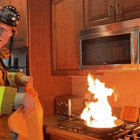 Fire
Fire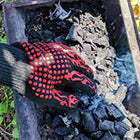 Safety
Safety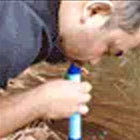 Survival
Survival Protection
Protection New
New
 Fire
Fire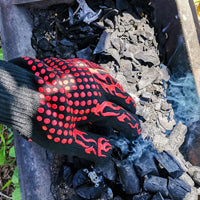 Safety
Safety Survival
Survival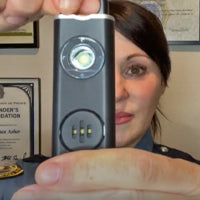 Protection
Protection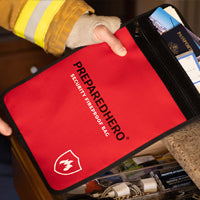 New
New



